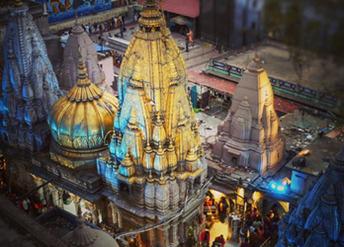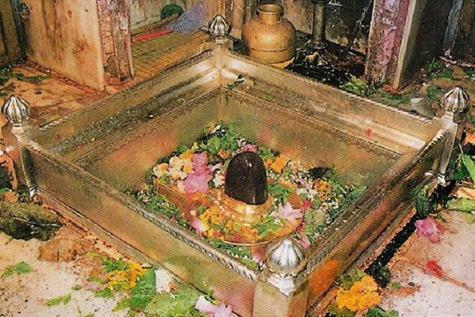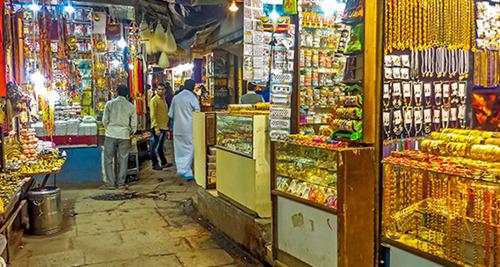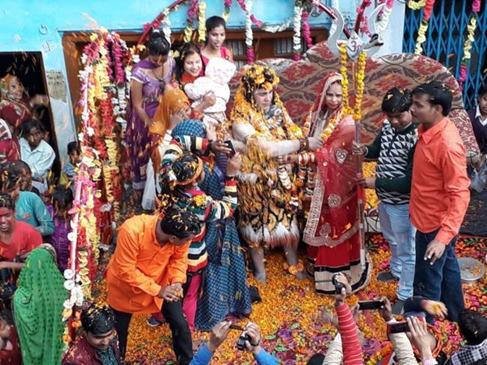Shivoham!
The Maha Shivratri festival always reminds me of my stay in Varanasi & the frenetic fervour with which this festival is celebrated in "Bhole Baba ki Nagari".
Located on the banks of the holy Ganges, Varanasi is regarded among the holiest of the Hindu cities.
The Kashi Vishwanath temple is widely recognized as one of the most important places of worship in the Hindu religion.

The Temple stands on the western bank of the holy river Ganga and is one of the twelve Jyotirlingas, the holiest of Shiva Temple. Inside the Kashi Vishwanath Temple is the Jyotirlinga of Shiva, Vishveshvara, or Vishvanath. The Vishveshvara Jyotirlinga has a very special and unique significance in the spiritual history of India. The magnificent edifice has gold plating on its 15.5-meter spire & is also known as ‘The Golden Temple!’
Inside the temple, towards the Northside, there is a well called the ‘ Jnana Vapi’ or the wisdom well. The sanctum of the temple holds the linga that is set in the center of the floor in a square silver altar.
It is believed that Varanasi is the place where the first Jyotirlinga manifested itself. Lord Shiva proclaimed His Supremacy over all the other gods. The temple had been destroyed and reconstructed several times in several Islamic invasions of India. It was last demolished by Aurangzeb, the sixth Mughal emperor who then carried out an un-Islamic act of constructing a mosque on the site where the demolished temple was situated.

Jyotirlinga
The current existing Kashi Vishwanath temple was built on an adjacent site by the Maratha ruler, Ahilya Bai Holkar of Indore in 1780, and not on the original site where a functioning mosque today stands. Maharaja Ranjit Singh, the first Sikh Maharaja, had donated 1-ton gold for the new temple’s dome.
In 1983, the management of this temple was taken over by the government of Uttar Pradesh.
Many legends record that the true devotee achieves freedom from death and saṃsāra by the worship of Shiva, Shiva's devotees on death being directly taken to his abode on Mount Kailash by his messengers and not to Yama. The superiority of Shiva and his victory over his nature. Shiva is himself identified with death, is also stated. There is a popular belief that Shiva himself blows the Tarak mantra of salvation into the ears of people who die naturally at Kashi.
Vishwanath Gali is one of the oldest and busiest streets in Varanasi, India. Vishwanath Gali which is roughly 300 meters long stretching from gyanvapi chowk to dashaswamedha ghat remains busy all day long with devotees jostling With each other to get darshan of Lord Vishwanath.

Vishwanath Gali
Shiva is the energy believed to make every living being alive. We are able to breathe, eat, walk and carry out our day-to-day activities because of Shiva. Not only does this energy drive living beings, but it also resides in non-living things - as their energy. Shiva, thus, drives existence.
Mahashivratri is a festival to celebrate the union of Shiva and Shakti, honoring life & celebrating our existence.
MahaShivratri is a sacred day & night where the planetary positions are such that there is an upsurge of cosmic energy in the entire northern hemisphere. One must remain awake throughout the night to soak into this Transcendental energy.
Devotees offer Dhatura, Vilwapatra, Madar flowers, and herbal milk over the Shivalingam. After the prayers, devotees consume Bhaang laced Thandai as prasad which gives them the energy to dance for the whole night as shiv baratis.
Shiva along with his entourage which included the bulls, wild animals, ghosts, witches, Aghoris, Naga sadhus etc took out the ‘Shiv Barat’ and reached the doorstep of Lord Himavan, Gauri's father. The entire procession in inebriated condition danced crazily, hundreds & thousands of damroos and other musical instruments were being played, Conches were being blown loud as a sign of victory, people boasted their lungs out to shout ‘Har har Mahadev’. It appeared that the three cosmic worlds came in unison to be a witness of this grandeur.
The Shiv Barat procession in Varanasi started in protest against the theft of gold from the temple premises of Kashi Vishwanath Temple in 1983 and became famous as 'Shiv Barat' attracting a large number of devotees and denizens and is one of the lakkhi festivals.

Over the years, the Barat is based on specific themes on contemporary issues and it passes from Mahamritunjaya Temple (Daranagar) to Dedsipul setting an example of communal harmony in the city.
This year, Shiva devotees will not be allowed to enter the sanctum sanctorum of the Kashi Vishwanath temple due to the COVID pandemic. Prayers would be allowed from the four doors of 'Garbhagriha'.
Due to the ongoing construction inside the Kashi Vishwanath Dham corridor, crowd control during 'Shiv Barat' will be a challenging task undoubtedly but Mahashivratri is a spiritual night to remember the eternal truth of Shivoham, meaning ‘I am that principle. I am Shiva. I am the truth, benevolence, eternity, beauty.’
